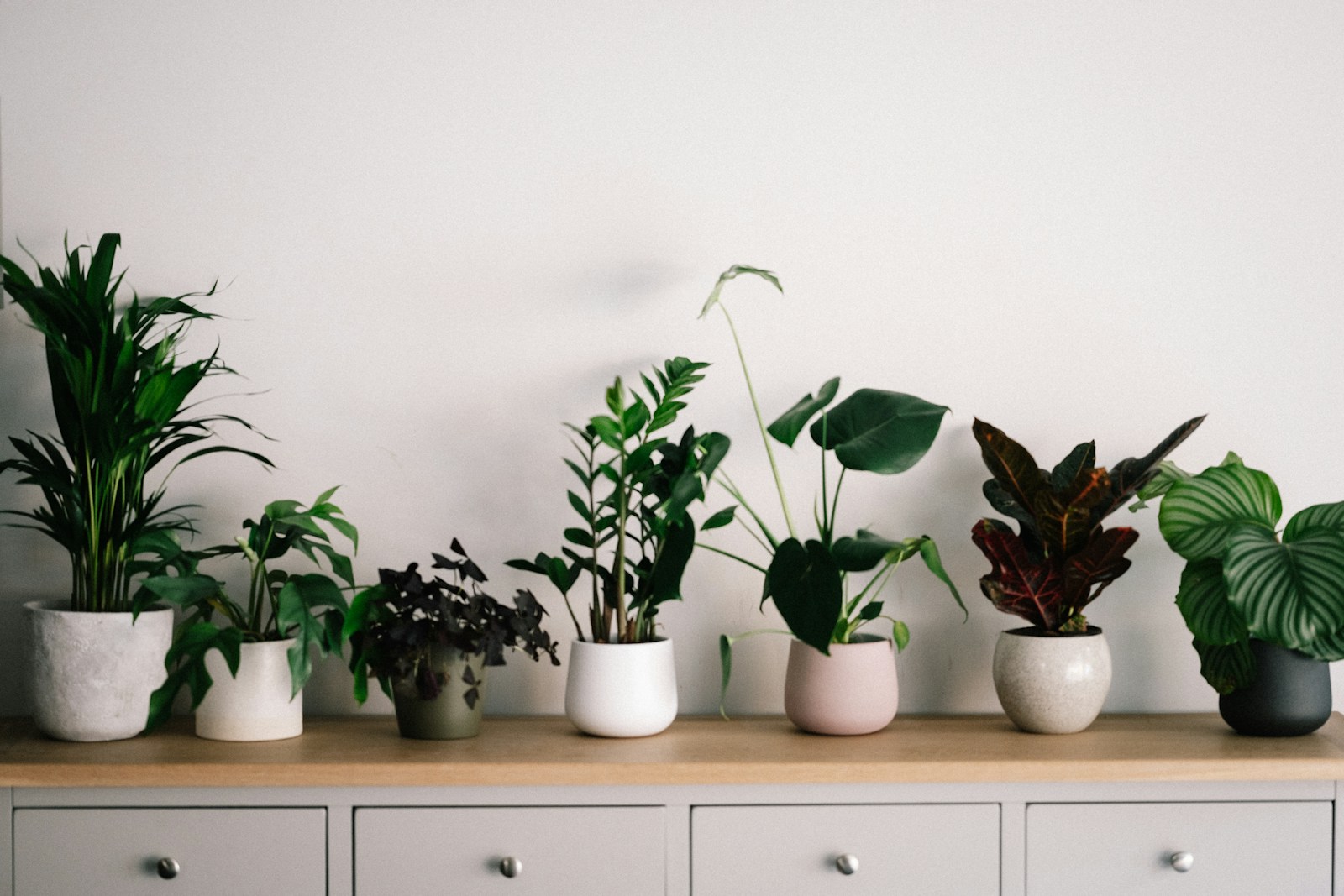Table of Contents
ToggleWhy Bring the Outdoors In? Unveiling the Amazing Benefits of Indoor Plants
More Than Just Decoration: The General Perks
Fresh Air, Happy Lungs: How Plants Purify Your Home
Beyond their aesthetic appeal, indoor plants offer a range of benefits, starting with their ability to improve the air we breathe. It turns out that these green companions can act as natural air purifiers within our homes. Research has indicated that houseplants can remove common indoor pollutants such as formaldehyde and benzene. A notable study conducted by NASA in 1989 explored this very capability, suggesting that certain plants could indeed filter out these harmful chemicals. This is particularly relevant considering that many everyday household items, from cleaning products to furniture, can release these volatile organic compounds (VOCs) into the air.
The process behind this purification is multifaceted. Plants not only absorb these pollutants through their leaves but also, through photosynthesis, they take in carbon dioxide and release fresh oxygen. Furthermore, the soil in potted plants plays a role too. Microorganisms residing in the soil can also help to break down air pollutants, and some research even suggests these microorganisms might have mood-boosting effects. Generally, it’s observed that larger and leafier plants tend to be more effective at this air-cleaning task. Some recommended examples include peace lilies, bamboo, aloe vera, figs, and Boston ferns, all noted for their air-purifying prowess. Certain varieties, like snake plants and peace lilies, have the added benefit of continuing to release oxygen even during the night, which could potentially improve sleep quality. This natural ability of plants to absorb toxins is known as phytoremediation, a process that harnesses plants to cleanse the environment. Some studies have even indicated that indoor plants could remove a significant percentage of VOCs from the air within a day. NASA’s research into this area was so promising that they even considered using plants as part of biological life support systems in space stations.
However, it’s worth noting that some more recent research has offered a slightly different perspective on the real-world effectiveness of houseplants for air purification. While laboratory studies often demonstrate the ability of plants to remove pollutants, the scale required to achieve a significant impact in a typical home or office setting might be quite large, potentially needing hundreds of plants per square meter. Some experts suggest that natural ventilation, simply opening a window, might be a more effective way to improve indoor air quality in many cases. The controlled environments of laboratory studies, often involving sealed chambers, differ considerably from the airflow and volume of typical indoor spaces. Therefore, while indoor plants do possess air-purifying capabilities, their effectiveness in our homes and offices might be more limited than initially believed, and relying solely on them for significant air quality improvement might not be practical for most people. The contribution of soil microorganisms to this process should also be acknowledged.
Stress Less, Live More: The Calming Power of Indoor Greenery
Beyond the physical benefits, indoor plants have a remarkable ability to soothe our minds and reduce stress. Numerous studies have explored this connection, revealing that caring for indoor plants can indeed lead to a reduction in both psychological and physiological stress. Interacting with plants, even something as simple as watering or repotting, has been shown to suppress the activity of our sympathetic nervous system, which is responsible for our “fight or flight” response, and can even lower diastolic blood pressure. Participants in research studies have often reported feeling more comfortable, soothed, and generally more at ease when they were engaged with plants compared to when they were performing tasks like working on a computer.

The calming effect of greenery extends beyond active interaction. Simply being in the presence of plants can make a difference. Studies have shown that exposure to greenery can actually reduce levels of cortisol, which is often referred to as the stress hormone. The very act of tending to plants can be therapeutic, providing a welcome opportunity to unwind and focus on the present moment. Some research suggests that plants release certain chemicals, known as phytoncides, which, when inhaled, might trigger our bodies to produce feel-good hormones like serotonin and endorphins, essentially acting as a natural mood booster. In fact, a review of multiple studies indicated that even just having indoor plants around can lead to improvements in both mental and physical health. This suggests a strong connection between our well-being and the presence of nature in our immediate surroundings.
Boost Your Brainpower: Enhancing Focus and Cognitive Function
The benefits of indoor plants extend to our cognitive abilities as well. Research has linked exposure to indoor plants with improved focus, a decrease in depressive moods, and a reduction in anxiety symptoms. For those experiencing mental fatigue, indoor plants might offer a welcome respite, helping to restore cognitive resources. Studies have also found that the presence of indoor plants in a workspace can foster creativity and enhance problem-solving skills. Adding greenery to an office or study area has been shown to contribute to increased productivity. The calming effect of plants on the mind can also play a role in alleviating anxiety and improving our ability to concentrate.
Visible greenery appears to have a restorative effect, enhancing our capacity to concentrate, even among children. One study, for instance, observed that elementary school students who spent time in a classroom with a real plant showed improvements in attention and concentration as revealed by brain scans. Further research indicated that students in classrooms with a green wall performed better on tests requiring selective attention, which is the ability to focus on specific information while filtering out distractions. Another study found that university students working in an office environment with plants showed improved performance in memory recall after completing a mentally demanding task. These findings suggest that incorporating plants into our indoor environments can be a valuable strategy for enhancing various aspects of our cognitive function.
A Sense of Well-being: Connecting with Nature Indoors
Ultimately, having indoor plants in our living and working spaces can significantly contribute to our overall sense of well-being. Exposure to these green companions has been consistently linked to improved feelings of wellness. A study conducted in Scandinavia, for example, found that participants who were exposed to indoor plants reported a greater sense of well-being compared to those who weren’t. Plants provide a tangible connection to the natural world, even when we are surrounded by urban landscapes, which can boost our overall happiness.
This positive impact aligns with the concept of biophilia, which suggests that humans have an innate desire to connect with nature. Indoor plants serve as a way to strengthen this inherent connection, leading to reduced stress and an increased feeling of well-being. Their presence can create a more pleasant and positive atmosphere within our homes and offices. It seems that by welcoming a bit of nature into our daily lives, we are nurturing not just our spaces but also our minds and emotions.
Indoor Plants: Tiny Allies in the Fight Against Climate Change
The Green Connection: How Houseplants Relate to Our Planet
Carbon Sequestration: Do Indoor Plants Really Make a Difference?
When we think about tackling climate change, our minds often turn to large-scale solutions like reducing emissions and preserving forests. But what about the role of our humble houseplants? Like all plants, indoor greenery absorbs carbon dioxide from the atmosphere during photosynthesis. This process, where plants convert CO2 into energy and release oxygen, is fundamental to life on Earth. While the impact of a single houseplant on global carbon dioxide levels might seem insignificant, it’s important to remember that every little bit can contribute to a larger positive effect. Some studies have even suggested that the carbon sequestration potential of indoor plants might be more substantial than previously estimated, with one indicating that a large indoor plant could potentially absorb over a kilogram of carbon dioxide in a year.
However, it’s also crucial to maintain a realistic perspective. Trees, with their significantly larger size and longer lifespans, are powerhouses when it comes to carbon sequestration, trapping considerably more carbon than smaller indoor plants. A mature tree, for instance, can absorb around 50 pounds of CO2 annually, and some species can sequester even more. Research on the specific impact of indoor plants on CO2 concentration in real-world settings like offices has yielded varied results. While some studies have shown a reduction in CO2 levels with the introduction of plants, others haven’t found a significant association, especially with a relatively small number of plants. Therefore, while indoor plants do play a role in carbon sequestration through photosynthesis, their contribution on a global scale is modest compared to that of forests and larger vegetation. Their primary environmental value in this context might lie more in raising awareness about the importance of plant life and the vital role it plays in our ecosystem.
Creating a Healthier Indoor Environment: Beyond Air Purification
The benefits of indoor plants for our environment extend beyond just the potential for air purification. These green additions to our homes can also contribute to a healthier indoor atmosphere in other ways. One notable aspect is their ability to increase humidity levels through transpiration. This process, where plants release water vapor into the air, can be particularly beneficial in dry indoor environments, especially during the winter months when heating systems tend to lower humidity. Certain plants, like areca palms, are known to be particularly effective natural humidifiers. Maintaining an optimal level of humidity, generally between 40% and 60%, is important for our respiratory health and can even help prevent the spread of viruses.
Furthermore, some research suggests that large, leafy indoor plants can help absorb sound, thereby reducing noise levels within interior spaces. This can contribute to a more peaceful and comfortable indoor environment, especially in busy homes or offices. Plants can also play a subtle role in regulating indoor temperatures. Through transpiration, they can have a cooling effect during the warmer summer months. Conversely, in winter, the moisture released by plants can make the air feel slightly warmer. These various ways in which indoor plants interact with our indoor environment highlight their potential to contribute to a more comfortable and potentially healthier living space.
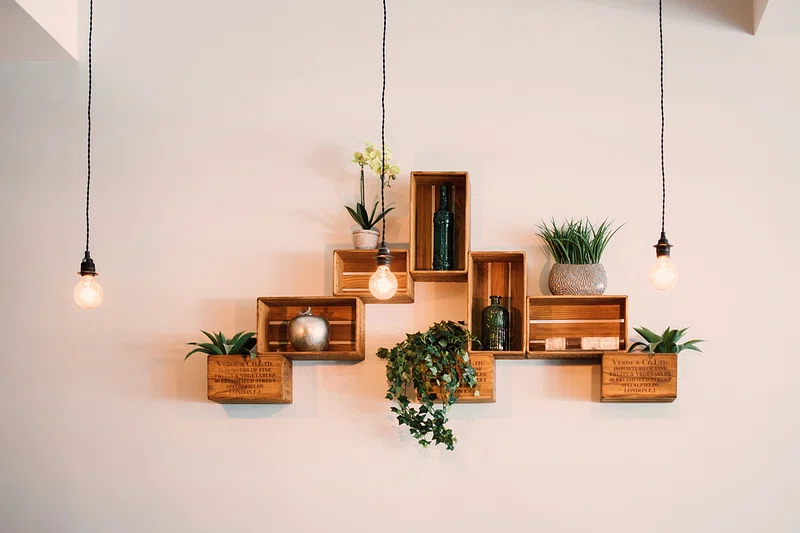
Regulating Humidity and Temperature: A Natural Approach
Studies have indeed shown a positive correlation between the number of indoor plants in a space and the relative humidity levels. The more plants present, the more moisture they release into the air through transpiration. It’s also important to note that different plant species have varying rates of transpiration, which means their potential to humidify an indoor environment can differ. For example, leafy plants like pothos tend to have higher transpiration rates compared to succulents like snake plants. This suggests that choosing the right type and quantity of plants can influence the humidity levels in your home.
Beyond humidity, indoor plants can also have a noticeable effect on temperature. Research indicates that through the process of transpiration, plants can actually reduce indoor temperatures by as much as 10°F during the summer months. This natural cooling mechanism could potentially lead to energy savings by lessening the reliance on air conditioning. While plants do release a small amount of carbon dioxide at night through respiration, the quantity is generally quite minimal, often less than what a single person exhales. Some studies have even explored the use of green walls, which are essentially vertical gardens, and found that they can contribute to lowering indoor temperatures and increasing relative humidity. This demonstrates the potential for indoor plants to offer a natural and subtle way to regulate the climate within our homes.
Meet the Green Stars: The Best Indoor Plants for Your Space
Effortless Elegance: Top Low-Maintenance Choices
Snake Plant (Sansevieria trifasciata): The Low-Light Champion
For those new to the world of indoor plants or individuals with busy schedules, the snake plant is often hailed as a champion of low maintenance. This hardy plant is remarkably tolerant of low light conditions, making it suitable for rooms that don’t receive a lot of natural sunlight. Beyond its resilience, the snake plant is also recognized as an efficient air purifier, known for its ability to remove toxins like benzene and formaldehyde from the air. Adding to its appeal, the snake plant releases oxygen during the night, a trait that makes it a beneficial addition to bedrooms. It’s also quite forgiving when it comes to watering, displaying a good level of drought tolerance. With its striking upright leaves, the snake plant offers both ease of care and a touch of modern elegance to any space.
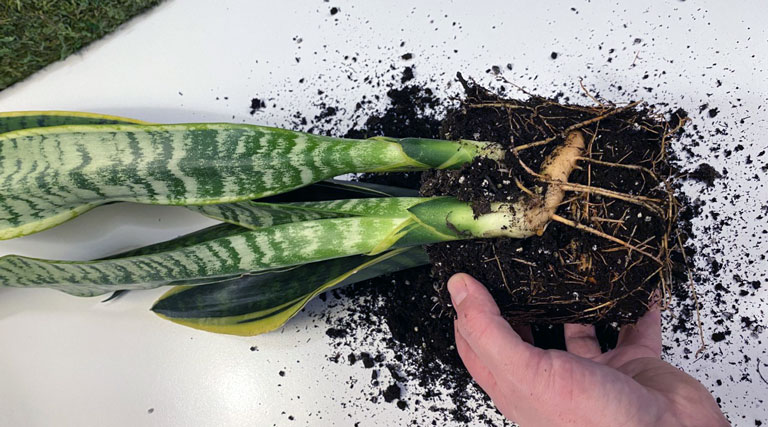
ZZ Plant (Zamioculcas zamiifolia): Drought-Tolerant Beauty
Another excellent choice for those seeking low-maintenance greenery is the ZZ plant. This plant is particularly known for its exceptional drought tolerance, capable of thriving even if you occasionally forget to water it. The ZZ plant can also survive in low light conditions, making it a versatile option for various areas within your home. Its glossy, dark green leaves have an attractive, almost architectural quality, adding a touch of beauty with minimal effort. The ZZ plant is considered a resilient plant, well-suited for beginners or anyone who prefers plants that don’t require a lot of fuss.

Pothos (Epipremnum aureum): The Versatile and Forgiving Vine
The pothos plant, often called devil’s ivy, is a hugely popular choice for its adaptability and ease of care. It’s known for its tolerance of a wide range of humidity and light conditions, making it a forgiving option for plant enthusiasts of all levels. Pothos is a fast-growing vine that can be easily propagated from stem cuttings, allowing you to expand your green collection or share with friends. Beyond its easy-going nature, pothos is also recognized for its air-purifying abilities, particularly its effectiveness in removing formaldehyde and other volatile organic compounds from the air. Its trailing habit makes it a versatile choice for hanging baskets, shelves, or even training to climb.
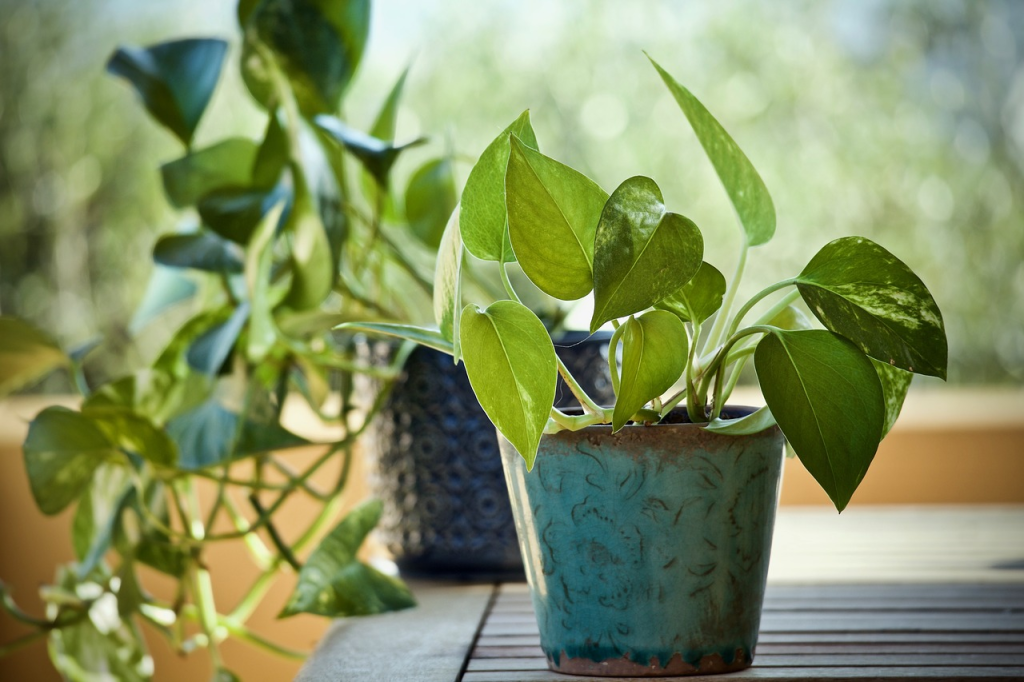
Natural Air Filters: Plants That Clean Your Indoor Air
Spider Plant (Chlorophytum comosum): A Toxin-Fighting Machine
The spider plant is another excellent contender when it comes to air purification. It’s particularly effective at removing toxins like carbon monoxide, formaldehyde, and xylene from indoor air. Spider plants are also relatively easy to grow and are known for producing “spiderettes,” or baby plants, which can be easily propagated to create new plants. NASA even included the spider plant in its list of top air-purifying plants. With its cascading green and white striped leaves, the spider plant is not only beneficial for air quality but also adds an attractive, slightly retro touch to home decor.

Peace Lily (Spathiphyllum): Beauty with Benefits
The elegant peace lily is another popular choice that offers both aesthetic appeal and air-purifying benefits. Known for its glossy dark green leaves and striking white blooms, the peace lily is effective at filtering out common indoor pollutants such as benzene, formaldehyde, and trichloroethylene. These plants tend to thrive in low light conditions and appreciate a humid environment. Some studies have even suggested that peace lilies can improve indoor air quality by a significant margin. Their graceful appearance combined with their air-cleansing properties make them a favored addition to many homes.
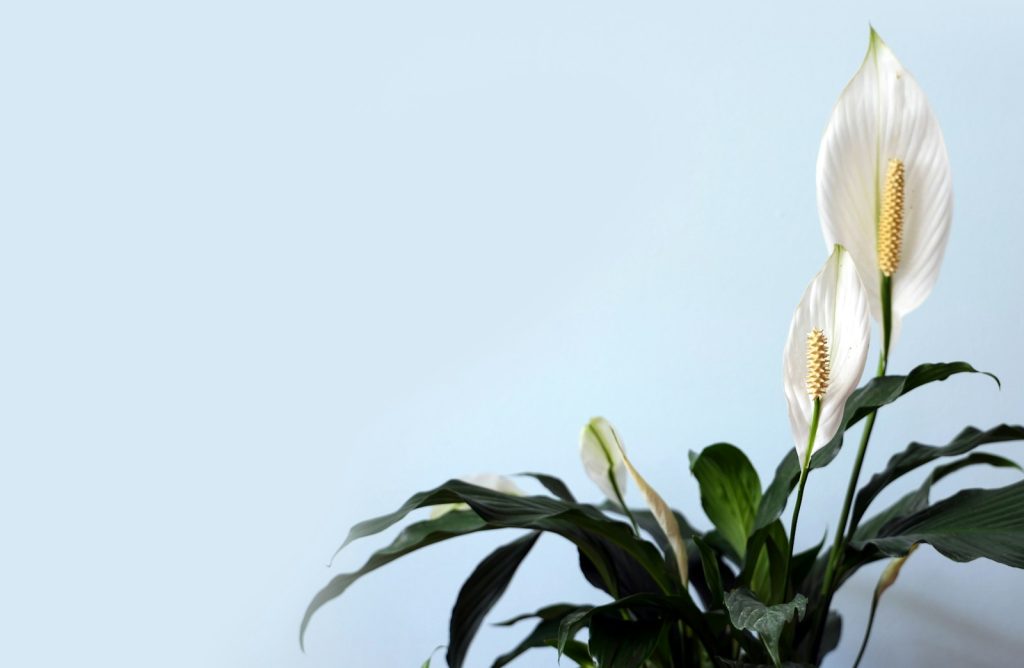
Areca Palm (Dypsis lutescens): A Tropical Air Purifier
For those looking to bring a touch of the tropics indoors while also improving air quality, the areca palm is an excellent option. This palm is known for its effectiveness in removing a range of indoor air pollutants, including formaldehyde, xylene, benzene, trichloroethylene, and carbon monoxide. Additionally, areca palms act as natural humidifiers, releasing moisture into the air, which can be particularly beneficial in dry indoor environments. These palms prefer bright, filtered sunlight to thrive. With their feathery, arching fronds, areca palms can add a lush, vibrant feel to larger living spaces while contributing to a healthier atmosphere.

Style Your Space: Plants for Every Aesthetic
Monstera Deliciosa: The Iconic Statement Piece
For those seeking a plant that makes a bold visual statement, the Monstera deliciosa, often called the Swiss cheese plant, is a popular choice. Its large, heart-shaped green leaves develop distinctive holes and slits as they mature, giving it a unique and iconic look. Monstera is a climbing plant that can be trained to grow up a support, adding a dramatic vertical element to your decor. It generally prefers low to medium light and regular watering. Its relatively easy care, combined with its striking foliage, has made the Monstera a highly sought-after plant for adding a touch of tropical flair to modern interiors.

Fiddle Leaf Fig (Ficus lyrata): Adding Modern Flair
The fiddle leaf fig has become a staple in modern interior design, prized for its large, upright, fiddle-shaped leaves that add an architectural element to any space. This plant can grow into a small tree indoors, making it a substantial and eye-catching addition. Fiddle leaf figs thrive in bright, indirect light and require consistent watering. While they can be a bit more particular about their care compared to some other houseplants, their striking appearance and ability to make a significant visual impact have made them a favorite for those aiming for a contemporary aesthetic.
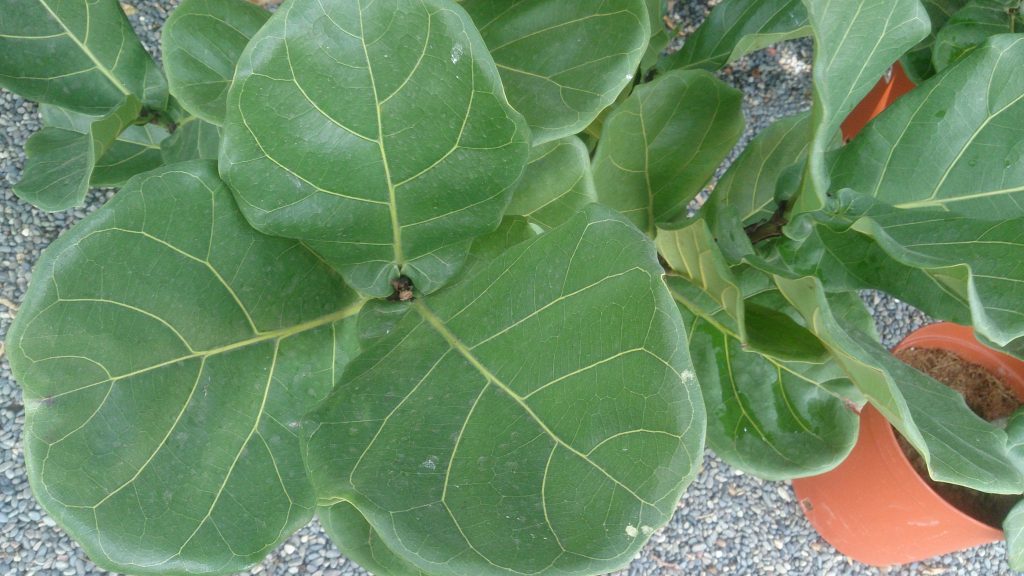
Calathea: Vibrant Patterns and Lively Movement
For those who appreciate a plant with personality and a pop of color, the Calathea genus offers a wide variety of options. These plants are known for their beautifully patterned leaves, featuring intricate designs in various shades and hues. Adding to their charm, many Calathea varieties are also known as prayer plants because their leaves fold up at night, resembling hands in prayer. These plants come in a diverse range of leaf shapes, colors, and patterns, ensuring there’s a Calathea to suit almost any taste. They generally prefer low to medium light and require high humidity to thrive. The vibrant foliage and unique leaf movements of Calathea plants make them a lively and visually engaging addition to indoor plant collections.

Green Thumb 101: Essential Care Tips for Thriving Indoor Plants
The Art of Watering: Finding the Right Balance
One of the most crucial aspects of keeping indoor plants happy and healthy is mastering the art of watering. Overwatering is a common pitfall for many plant parents and can unfortunately lead to root rot, a condition that can be fatal for plants. For the majority of houseplants, it’s best to allow the top inch or two of the soil to dry out between waterings. When it’s time to water, make sure to do so thoroughly, until you see water draining from the holes at the bottom of the pot. It’s equally important to avoid letting your plant sit in standing water, as this can also contribute to root problems. A good way to check if your plant needs water is to simply stick your finger about an inch or two into the soil; if it feels dry, it’s likely time to water. Keep in mind that the watering needs of your plants will vary depending on factors such as the specific type of plant, the ambient temperature and humidity levels in your home, and the time of year. Generally, plants require less frequent watering during the winter months when their growth naturally slows down.
Let There Be Light: Understanding Your Plant’s Needs
Just like watering, providing the appropriate amount of light is fundamental to the health and well-being of your indoor plants. In fact, improper light intensity is another frequent reason why houseplants might struggle. It’s important to understand that different types of plants have vastly different light requirements. You’ll often see light levels described using terms like full sunlight, bright indirect light, medium light, and low light. The amount of natural light your home receives indoors will depend on various factors, including the direction your windows face and any obstructions outside. While many houseplants thrive in bright, indirect light, it’s generally best to avoid placing them in direct sunlight, which can scorch their leaves. Even plants that are considered low-light tolerant still need some level of light to photosynthesize and stay healthy. Observing how your plant responds and adjusting its position accordingly is often necessary to ensure it’s getting the right amount of light.
Soil Matters: Choosing the Perfect Potting Mix
The medium in which your indoor plants grow plays a vital role in their overall health. Plants need a suitable soil mix to provide them with the necessary support, nutrients, aeration, and drainage. While some specialized houseplants like air plants can grow without soil, the majority will thrive in a well-chosen potting mix. For most common houseplants, an all-purpose potting soil will generally do the trick. However, certain types of plants have more specific needs. For instance, cacti and succulents prefer a potting mix that is leaner and contains more sand or perlite to ensure better drainage, as they are susceptible to root rot in overly moist conditions. Orchids, on the other hand, typically do best in a mix comprised primarily of bark, which allows for excellent air circulation around their roots. It’s always a good idea to use fresh, sterile potting mix when planting or repotting to minimize the risk of introducing diseases and pests to your plants. Avoid using garden soil for your indoor plants, as it can become compacted and may harbor unwanted organisms. Lastly, ensure that the containers you choose for your plants have adequate drainage holes to allow excess water to escape.
Feeding Your Green Friends: The Role of Fertilization
While the potting mix provides initial nutrients, indoor plants that you intend to keep for the long term will benefit from a regular fertilization schedule. Fertilizing helps to replenish the nutrients in the soil that can become depleted over time as the plant grows. The best time to fertilize most houseplants is during their active growing season, which is typically in the spring and summer months. During the fall and winter, when plant growth naturally slows down, it’s generally recommended to reduce or even stop fertilizing. You can use a balanced, all-purpose fertilizer, or you might choose a fertilizer that is specifically formulated for the type of plant you have. It’s crucial to follow the instructions on the fertilizer packaging carefully to avoid over-fertilizing, as too much fertilizer can damage the plant’s roots. As a general rule, it’s better to under-fertilize than to over-fertilize. One important tip is to never apply liquid fertilizer to a plant that is already wilted; it’s best to water the plant first and then fertilize after it has had a chance to recover slightly.

Green Up Your Home: Incorporating Indoor Plants into Your Decor
Small Spaces, Big Impact: Creative Ideas for Plant Placement
Even if you live in a smaller home or apartment, you can still enjoy the numerous benefits of indoor plants by getting creative with their placement. You might be surprised at how much even a few well-placed plants can enhance a space. One effective strategy is to utilize vertical space. Consider hanging planters from the ceiling or installing wall-mounted shelves to display trailing plants or smaller potted varieties. Tiered plant stands are another great way to maximize vertical space and create visually interesting displays. Grouping plants together can also create a lush, mini indoor garden effect and can even help to increase humidity levels around the plants. If you have an open floor plan, larger, leafy plants can even be used to subtly divide different areas within a room, adding both greenery and a sense of definition. Terrariums offer a charming and low-maintenance way to incorporate plants, especially in smaller spaces, creating miniature green worlds in enclosed glass containers. Don’t forget about windowsills, which can be ideal spots for plants that need more light. When deciding where to place your plants, always consider their size and growth habit to ensure they have enough room to thrive.
Bringing Life to Your Workspace: Plants for Your Home Office
With the rise of remote work, many people are looking for ways to make their home offices more inviting and productive. Incorporating plants into your workspace can be a fantastic way to achieve this. Studies have shown that having plants in your home office can boost productivity, reduce stress levels, and even improve air quality. When choosing plants for your office, it’s important to consider the lighting conditions. If your office doesn’t get a lot of natural light, opt for low-light tolerant plants like snake plants or pothos. For busy professionals who might not have a lot of time for plant care, low-maintenance varieties such as ZZ plants, peace lilies, or spider plants are excellent choices. You can place smaller plants directly on your desk to bring a touch of nature to your immediate work area, or utilize shelving and wall-mounted planters to save valuable desk space. If you have more room, consider placing a larger plant beside your desk to create a greener and more calming atmosphere.
Matching Your Style: From Minimalist to Bohemian
Indoor plants are incredibly versatile and can be seamlessly integrated into a wide range of interior design styles. The key is to choose plants and planters that complement your existing decor. For a minimalist aesthetic, opt for plants with clean lines and simple, sculptural shapes, such as succulents or snake plants, and pair them with sleek, neutral-toned planters. The focus here is often on a few carefully chosen statement pieces rather than an abundance of plants. If your style leans more towards bohemian, embrace a more is more approach with a variety of plants in different sizes, textures, and colors. Use eclectic planters, including macrame hangers, woven baskets, and colorful ceramic pots, to create a lush and vibrant indoor jungle. Consider the colors and textures present in your decor when selecting both your plants and their containers to create a cohesive look. You can even mix real and artificial plants to achieve a fuller, more layered effect. Ultimately, the goal is to select plants that not only thrive in your environment but also enhance the overall aesthetic you’re trying to achieve.
Common Indoor Plant Problems: Identification and Solutions
Battling the Bugs: Dealing with Pesky Plant Pests
One of the challenges that can sometimes arise with indoor plants is dealing with pests. Unfortunately, the stable temperatures and lack of natural predators indoors can create an environment where certain pests can thrive. Some common culprits include aphids, spider mites, mealybugs, scale insects, and fungus gnats. Factors like overwatering, poor air circulation, and even excessive fertilization can sometimes make plants more susceptible to infestations. The best approach to dealing with plant pests is often prevention. Regularly inspect new plants before bringing them into your home, provide optimal care in terms of watering and light, ensure good air circulation, and keep your plants clean by occasionally wiping down their leaves. If you do notice pests, there are various treatment methods you can try. For minor infestations, you might be able to simply wipe the pests off with a damp cloth or spray the plant with a solution of mild soapy water or neem oil. Yellow sticky traps can be helpful for catching adult fungus gnats. In more severe cases, you might need to resort to insecticidal soaps or, as a last resort, systemic insecticides, always ensuring you follow the product instructions carefully.
Spotting the Signs: Recognizing and Treating Plant Diseases
Besides pests, indoor plants can also be susceptible to various diseases. Recognizing the early signs of a problem is crucial for effective treatment. Some common indicators of plant diseases include yellowing leaves, the appearance of brown or black spots on foliage, wilting, distorted or stunted growth, and the presence of mold or mildew. Plant diseases can be triggered by a number of factors, including improper watering (both overwatering and underwatering), low humidity levels, poor air circulation, and fungal or bacterial infections. To help prevent diseases, ensure you are watering your plants correctly, providing good air circulation, and avoiding prolonged periods of wetness on the leaves. If you suspect a fungal disease, you might try treating it with neem oil, which has fungicidal properties, or another appropriate fungicide. It’s also a good idea to isolate any affected plants to prevent the potential spread of the disease to your other healthy greenery.
Choosing the Right Plant: Avoiding Environmental Mismatches
One of the most effective ways to prevent problems with your indoor plants is to choose varieties that are well-suited to the specific environmental conditions of your home. Consider the amount of light each room receives, the typical temperature and humidity levels, and even your own lifestyle and the amount of time you can realistically dedicate to plant care. Before bringing a new plant home, take the time to research its specific needs and ensure that you can provide the right conditions for it to thrive. If you have pets, it’s also important to check if a particular plant is toxic to them, as some popular houseplants can be harmful if ingested. By carefully selecting plants that are a good match for your environment and lifestyle, you’ll significantly increase your chances of having happy and healthy indoor greenery.
The Feel-Good Factor: Psychological and Emotional Benefits of Indoor Plants
The Biophilia Connection: Our Innate Love for Nature
The positive impact of indoor plants on our mental and emotional well-being can be understood through the lens of biophilia, a concept that describes the innate human connection to nature. Biophilic design is an approach that aims to connect people with the natural environment within built spaces, recognizing our inherent need to affiliate with other living organisms. Incorporating plants is a fundamental element of biophilic design, serving as a direct way to bring nature indoors. Studies have consistently shown that exposure to natural elements, including plants, is linked to various psychological benefits, such as lower blood pressure, reduced symptoms of depression and anxiety, and an increased ability to focus and recover from stress. This suggests that our positive responses to indoor plants are deeply rooted in our evolutionary history and our fundamental connection to the natural world.
Reducing Stress and Anxiety: Finding Calm in Greenery
The presence of indoor plants has been shown to have a significant calming effect, helping to reduce feelings of stress and anxiety. Research indicates that being around plants can actually lower levels of cortisol, a key hormone associated with stress. Engaging in the act of caring for plants, whether it’s watering, pruning, or simply observing their growth, can be a surprisingly meditative and calming activity, providing a welcome respite from the demands of daily life. The visual connection we have with nature, even in the form of indoor plants, can bring a sense of tranquility and peace to our surroundings. Some studies even suggest that plants release certain volatile organic compounds that may have stress-reducing effects on humans. It appears that incorporating greenery into our indoor environments offers a simple yet powerful way to cultivate a sense of calm and well-being.
Boosting Mood and Well-being: A Natural Mood Enhancer
Beyond stress reduction, indoor plants have also been shown to have a positive impact on our overall mood and sense of well-being. Their presence can create a more pleasant and positive atmosphere within our homes and offices, making the spaces feel more inviting and comfortable. Studies have indicated that being around plants can enhance feelings of comfort and relaxation. Interestingly, research has even found that simply looking at pictures of plants can have a positive effect on our stress levels. It seems that indoor plants act as a natural mood enhancer, contributing to feelings of happiness, contentment, and an overall improved sense of well-being, likely due to a combination of their aesthetic appeal and our innate connection to the natural world.
Thinking Outside the Pot: Innovative Ways to Use Indoor Plants
Vertical Gardens and Living Walls: Greenery Gone Up
In today’s world, where space can often be a premium, innovative ways to incorporate plants are gaining popularity. Vertical gardens and living walls offer a fantastic solution for bringing a significant amount of greenery indoors, even in limited spaces. These systems allow plants to grow vertically on walls or freestanding structures, transforming otherwise unused space into lush green displays. Beyond their aesthetic appeal, living walls have been shown to improve air quality, reduce noise pollution by absorbing sound, and enhance mental well-being by creating a more tranquil atmosphere. They can also contribute to regulating indoor temperatures, having a cooling effect in summer and providing insulation in winter, potentially leading to energy cost reductions. Various systems exist for creating vertical gardens, including hydroponic setups that don’t require soil and traditional soil-based methods. These innovative approaches allow for a more intensive integration of nature into our indoor environments.
Terrarium Tales: Creating Miniature Green Worlds
Terrariums offer another creative and space-efficient way to enjoy the beauty of plants indoors. These miniature ecosystems are grown in enclosed glass containers, creating self-contained environments that require minimal maintenance. Building and caring for a terrarium can be a mindful and engaging activity, offering a sense of calm and well-being. Terrariums can be designed with a variety of themes and plant types, from lush tropical scenes to arid desert landscapes, creating stunning visual displays that bring a touch of nature to even the smallest of spaces. Their low-maintenance nature makes them an ideal option for those who love plants but may not have a lot of time for regular care.
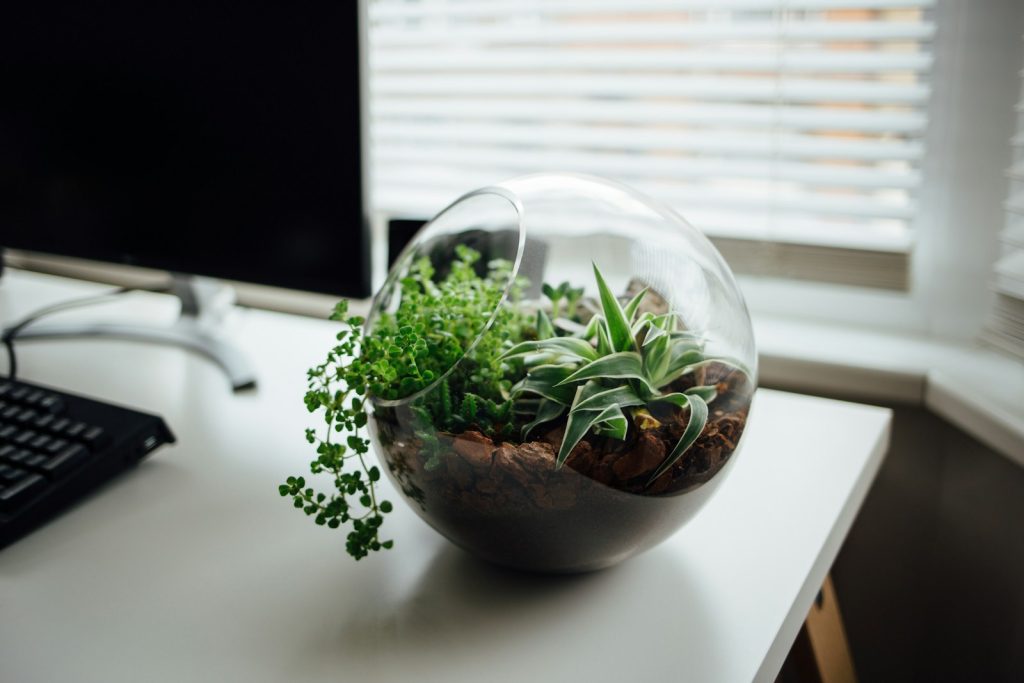
Sustainable Choices: Making Your Indoor Garden Eco-Friendly
While indoor plants offer numerous benefits, it’s important to also consider the sustainability aspect of the houseplant industry and our own plant care practices. For example, some commercially available potting mixes contain ingredients like peat moss, the harvesting of which can have negative environmental impacts on wetland ecosystems. Opting for peat-free potting mixes and considering alternatives like coco coir can be a more sustainable choice. Reusing plastic nursery pots instead of constantly buying new decorative ones is another way to reduce waste. Sourcing your plants from local nurseries whenever possible can help to reduce the carbon footprint associated with transportation. Choosing plants that are well-suited to your specific indoor environment, in terms of light, temperature, and humidity, can help you avoid the need for excessive artificial lighting or climate control, thus saving energy. Finally, adopting water-wise planting practices and using efficient watering techniques will help conserve water resources. By making conscious choices about the plants we buy and how we care for them, we can ensure that our indoor gardens are not only beautiful and beneficial but also environmentally responsible.
Conclusion: Embrace the Green: Transforming Your Space and Mindset with Indoor Plants
From purifying the air we breathe to calming our minds and enhancing our focus, the benefits of incorporating indoor plants into our homes and workplaces are truly remarkable. These green companions not only beautify our spaces but also foster a deeper connection with nature, offering a multitude of psychological and emotional advantages. While their direct impact on global climate change might be modest, the collective effort of bringing more greenery indoors contributes to a healthier indoor environment and promotes a greater appreciation for the natural world. By understanding the needs of different plants and adopting sustainable care practices, we can create thriving indoor gardens that enrich our lives and contribute to a more environmentally conscious way of living. So, why not embrace the green and experience the transformative power of indoor plants for yourself?
Frequently Asked Questions (FAQs)
What are the easiest indoor plants to care for? Some of the easiest indoor plants to care for include the snake plant, which tolerates low light and infrequent watering ; the ZZ plant, known for its resilience and drought tolerance ; pothos, a versatile vine that adapts to various conditions ; the spider plant, which is relatively forgiving and produces baby plants ; and the peace lily, which can tolerate low light and signals when it needs water by drooping.
How effective are indoor plants at purifying air in real-world settings? While laboratory studies have demonstrated that certain indoor plants can remove pollutants from the air, the effectiveness of this in typical home or office environments is still debated. Some research suggests that a significant number of plants would be needed to have a noticeable impact on air quality in a standard-sized room. Natural ventilation, such as opening windows, is also a key factor in indoor air quality.
How can I incorporate indoor plants into a minimalist decor style? To incorporate indoor plants into a minimalist decor style, choose plants with simple, clean lines and sculptural shapes, such as succulents, snake plants, or ZZ plants. Opt for minimalist planters in neutral colors like white, black, or gray. Focus on a few well-chosen statement plants rather than cluttering the space with too many. Consider the placement carefully to enhance the clean and uncluttered aesthetic.
Do indoor plants contribute to climate change in a significant way? Indoor plants do absorb carbon dioxide during photosynthesis, thus contributing to carbon sequestration. However, their capacity to do so is significantly less than that of trees due to their smaller size and lifespan. The primary environmental benefits of indoor plants are likely more localized, such as improving indoor air quality (though debated) and regulating humidity, as well as promoting a connection with nature.
What are some common signs that my indoor plant is unhealthy? Common signs that an indoor plant might be unhealthy include yellowing or browning leaves, wilting or drooping, stunted growth, the appearance of spots or unusual growths on the leaves or stems, and visible signs of pest infestations, such as small insects or sticky residue. It’s important to monitor your plants regularly for these signs and address any issues promptly by adjusting watering, light, or other care factors. Sources used in the report

